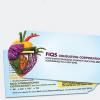- Home
- Sponsors
- Forums
- Members ˅
- Resources ˅
- Files
- FAQ ˅
- Jobs
-
Webinars ˅
- Upcoming Food Safety Fridays
- Upcoming Hot Topics from Sponsors
- Recorded Food Safety Fridays
- Recorded Food Safety Essentials
- Recorded Hot Topics from Sponsors
- Food Safety Live 2013
- Food Safety Live 2014
- Food Safety Live 2015
- Food Safety Live 2016
- Food Safety Live 2017
- Food Safety Live 2018
- Food Safety Live 2019
- Food Safety Live 2020
- Food Safety Live 2021
- Training ˅
- Links
- Store ˅
- More

Food fraud mitigation plan under FSSC version 5.1
Started by ThamVo, Nov 11 2021 04:24 PM
19 replies to this topic
#1

Posted 11 November 2021 - 04:24 PM
Hi.
I am a university student. I am working on a thesis on a food fraud mitigation plan under FSSC version 5.1 for cookies. I'm not sure how to analyze vulnerabilities in food fraud and assess weaknesses in the production process related to economic motives.
Hope everybody help please. Thanks very much
#2

Posted 11 November 2021 - 05:42 PM
Hi.I am a university student. I am working on a thesis on a food fraud mitigation plan under FSSC version 5.1 for cookies. I'm not sure how to analyze vulnerabilities in food fraud and assess weaknesses in the production process related to economic motives.Hope everybody help please. Thanks very much
Hi ThamVo,
FSSC's guidance manual on food fraud is attached here -
https://www.ifsqn.co...00/#entry168500
A lot of practical examples are illustrated in the equivalent IFS Guide attached in post 14 of same thread, ie -
https://www.ifsqn.co...00/#entry168565
PS - many people have found this "plan" quite useful -
Kind Regards,
Charles.C
|
Thanked by 2 Members:
|
,
|
#3

Posted 18 November 2021 - 03:08 PM
Hi ThamVo,
FSSC's guidance manual on food fraud is attached here -
https://www.ifsqn.co...00/#entry168500
A lot of practical examples are illustrated in the equivalent IFS Guide attached in post 14 of same thread, ie -
https://www.ifsqn.co...00/#entry168565
PS - many people have found this "plan" quite useful -
Yes, I have read through those documents. AAnd I don't know how to evaluate the company's actual situation of using raw materials, for example information about the motives of food fraud intentionally or unintentionally using fraudulent ingredients.
In the production process what data are the loopholes to perform food fraud?
I really don't know how to present that information.
Hope to help and thank you very much
#4

Posted 18 November 2021 - 03:36 PM
Hey ThamVo, I'm attaching my program as a sample - hope, it'd give you some idea
Attached Files
|
Thanked by 2 Members:
|
,
|
#5

Posted 18 November 2021 - 03:39 PM
The motives of intentional food fraud are typically monetary. Let's say your cookie recipe calls for Pure Vanilla Extract and that is what you have on your label. And for the purposes of this example, lets say the Pure Vanilla Extract is $100/gallon. In a cost cutting effort, you find out that you can use an Artificial Vanilla Flavor and your cookies taste the same. And for the purposes of this example, lets say the Artificial Vanilla Flavor is $10/gallon. If you leave Pure Vanilla Extract on your label, but use the Artificial Vanilla Flavor to cut costs, that is intentional food fraud.
Unintentional food fraud motives may also be monetary, however, they could be the monetary motives of one of your suppliers. Let's say your supplier sells you what they are claiming to be Pure Vanilla Extract, but turns out to be Artificial Vanilla Flavor. In this instance, you have Pure Vanilla Extract on your label because that is what you are purchasing from your supplier, so your food fraud is unintentional, but your supplier's food fraud is intentional.
Hope this helps.
|
Thanked by 2 Members:
|
,
|
#6

Posted 18 November 2021 - 03:44 PM
The motives of intentional food fraud are typically monetary. Let's say your cookie recipe calls for Pure Vanilla Extract and that is what you have on your label. And for the purposes of this example, lets say the Pure Vanilla Extract is $100/gallon. In a cost cutting effort, you find out that you can use an Artificial Vanilla Flavor and your cookies taste the same. And for the purposes of this example, lets say the Artificial Vanilla Flavor is $10/gallon. If you leave Pure Vanilla Extract on your label, but use the Artificial Vanilla Flavor to cut costs, that is intentional food fraud.
Unintentional food fraud motives may also be monetary, however, they could be the monetary motives of one of your suppliers. Let's say your supplier sells you what they are claiming to be Pure Vanilla Extract, but turns out to be Artificial Vanilla Flavor. In this instance, you have Pure Vanilla Extract on your label because that is what you are purchasing from your supplier, so your food fraud is unintentional, but your supplier's food fraud is intentional.
Hope this helps.
So do I need to do a risk assessment for the production process?
#7

Posted 18 November 2021 - 03:49 PM
You need a risk assessment for your raw materials and suppliers. You want to evaluate which raw materials could be easily substituted with another similar cheaper product and put controls in place to prevent this from happening. You also want to evaluate your suppliers to see if they have a history of providing fraudulent products and find alternative suppliers if necessary.
|
Thanked by 1 Member:
|
|
#8

Posted 18 November 2021 - 04:08 PM
You need a risk assessment for your raw materials and suppliers. You want to evaluate which raw materials could be easily substituted with another similar cheaper product and put controls in place to prevent this from happening. You also want to evaluate your suppliers to see if they have a history of providing fraudulent products and find alternative suppliers if necessary.
So, when assessing the risk for raw materials, do we need to evaluate the 7 types of fraud? What type of fraud is possible?
#9

Posted 18 November 2021 - 04:11 PM
Hey ThamVo, I'm attaching my program as a sample - hope, it'd give you some idea
Hi Olena,
Thks for the attachment/program..
Did this program auditorially satisfy Clause 2.5.4. ? If so, I am rather astonished but nonetheless congratulate you. ![]()
Kind Regards,
Charles.C
#10

Posted 18 November 2021 - 04:15 PM
So, when assessing the risk for raw materials, do we need to evaluate the 7 types of fraud? What type of fraud is possible?
Have a look at Sheet 2 of the excel in this Post -
Edited by Charles.C, 18 November 2021 - 04:16 PM.
corected link
Kind Regards,
Charles.C
|
Thanked by 1 Member:
|
|
#11

Posted 18 November 2021 - 04:17 PM
Hi Olena,
Thks for the attachment/program..
Did this program auditorially satisfy Clause 2.5.4. ? If so, I am astonished but nonetheless congratulate you.
If you're asking about my auditor being satisfied with this program - yes, completely. Actually, the audit this year went perfectly without any comment:)
|
Thanked by 1 Member:
|
|
#12

Posted 18 November 2021 - 04:18 PM
So, when assessing the risk for raw materials, do we need to evaluate the 7 types of fraud? What type of fraud is possible?
That's what you have to determine with your assessment. You will need to research each of the raw materials and see what they are at risk for. olenazh did a great job of this in the attached document.
|
Thanked by 2 Members:
|
,
|
#13

Posted 18 November 2021 - 04:24 PM
Yes, thank you very much
#14

Posted 18 November 2021 - 10:08 PM
If you're asking about my auditor being satisfied with this program - yes, completely. Actually, the audit this year went perfectly without any comment:)
Hi Olena,
I liked the pointed descriptions of item vulnerabilities but -
(1) Could not see any comments regarding Supply Chain complexity (required by fssc Guidance). This is typically regarded as a fundamental element.
(2) Could not see any comments regarding Supplier Relationships.(required by fssc Guidance).
(3) This is more debatable due fssc's ambiguous text but a previous thread considered that a a specific analysis of the Process stages in respect to opportunities for Fraud (ie similar to SQF) was required by this paragraph in the Guidance -
Note: address all types of Food Fraud defined by GFSI (substitution, unapproved enhancements,misbranding, counterfeiting, stolen goods or others); address all products from incoming goods (e.g. raw materials, packaging materials) to outgoing goods (e.g. (semi) finished product). See Appendix 1 for more information.
FSSC's own Guidance can itself be criticised in that the methodology is claimed to implement GFSI's definition of Food Fraud but the Guidance as presented obviously does not do so. The word "safety" is not even mentioned in section 6 / Auditing.
I speculate that FSSC have primarily only included this topic so as to maintain compliance to GFSI.
Kind Regards,
Charles.C
|
Thanked by 1 Member:
|
|
#15

Posted 19 November 2021 - 01:44 PM
Hi Olena,
I liked the pointed descriptions of item vulnerabilities but -
(1) Could not see any comments regarding Supply Chain complexity (required by fssc Guidance). This is typically regarded as a fundamental element.
(2) Could not see any comments regarding Supplier Relationships.(required by fssc Guidance).
(3) This is more debatable due fssc's ambiguous text but a previous thread considered that a a specific analysis of the Process stages in respect to opportunities for Fraud (ie similar to SQF) was required by this paragraph in the Guidance -
FSSC's own Guidance can itself be criticised in that the methodology is claimed to implement GFSI's definition of Food Fraud but the Guidance as presented obviously does not do so. The word "safety" is not even mentioned in section 6 / Auditing.
I speculate that FSSC have primarily only included this topic so as to maintain compliance to GFSI.
Thank you Charles for your valuable comments, I'll definitely take them into account while updating my program.
#16

Posted 19 November 2021 - 04:17 PM
Do you have a list of sources sited that you pulled the information from and do you keep that on file for your audit? I did not see any attached.
If you don't like change, you're going to like becoming irrelevant less.
#17

Posted 19 November 2021 - 04:29 PM
Do you have a list of sources sited that you pulled the information from and do you keep that on file for your audit? I did not see any attached.
Hi Tyler; Are you asking me? If so - whatever sources I have on that doc, if any, that's all. No, I don't keep them on file.
#18

Posted 06 December 2021 - 01:48 PM
Này ThamVo, tôi đang đính kèm chương trình của mình như một mẫu - hy vọng, nó sẽ cung cấp cho bạn một số ý tưởng
Xin chào Olena,
Thks cho phần đính kèm / chương trình ..
Trong tài liệu đính kèm có ghi: thực hiện tất cả các biện pháp có thể để kiểm soát thiết bị (ví dụ: cân, nhiệt kế, máy tiệt trùng, v.v.) để đảm bảo các thông số quy trình chính xác và ngăn chặn thông tin nhãn sai. Vậy làm thế nào để thực hiện các biện pháp kiểm soát thiết bị, rất mong được sự giúp đỡ của các bạn. Cảm ơn
#19

Posted 06 December 2021 - 01:51 PM
|
Thanked by 1 Member:
|
|
#20

Posted 06 December 2021 - 01:55 PM
Well thanks for giving me more info but I came across this site. I'm having problems with my manufacturing process risk assessment
1 user(s) are reading this topic
0 members, 1 guests, 0 anonymous users















